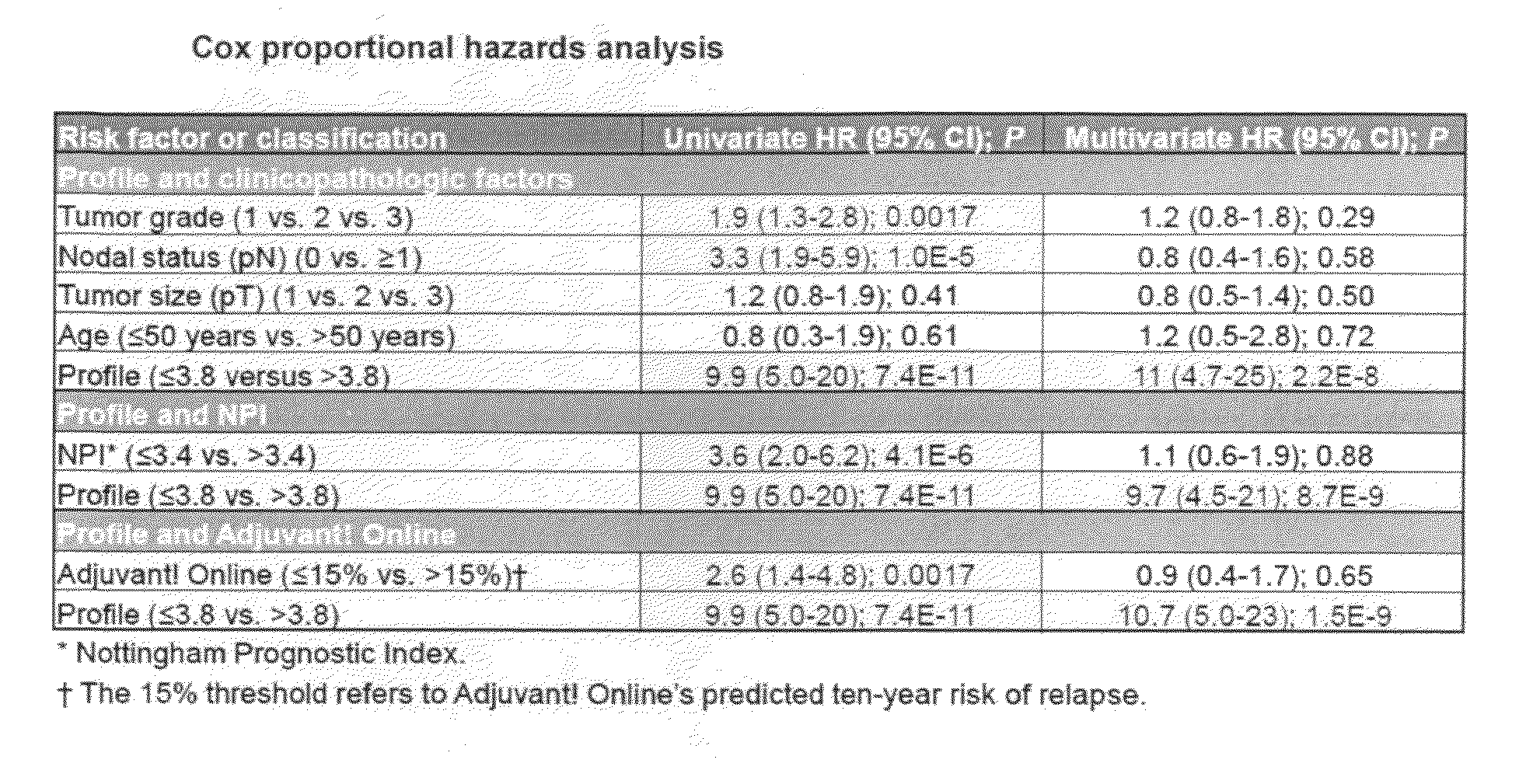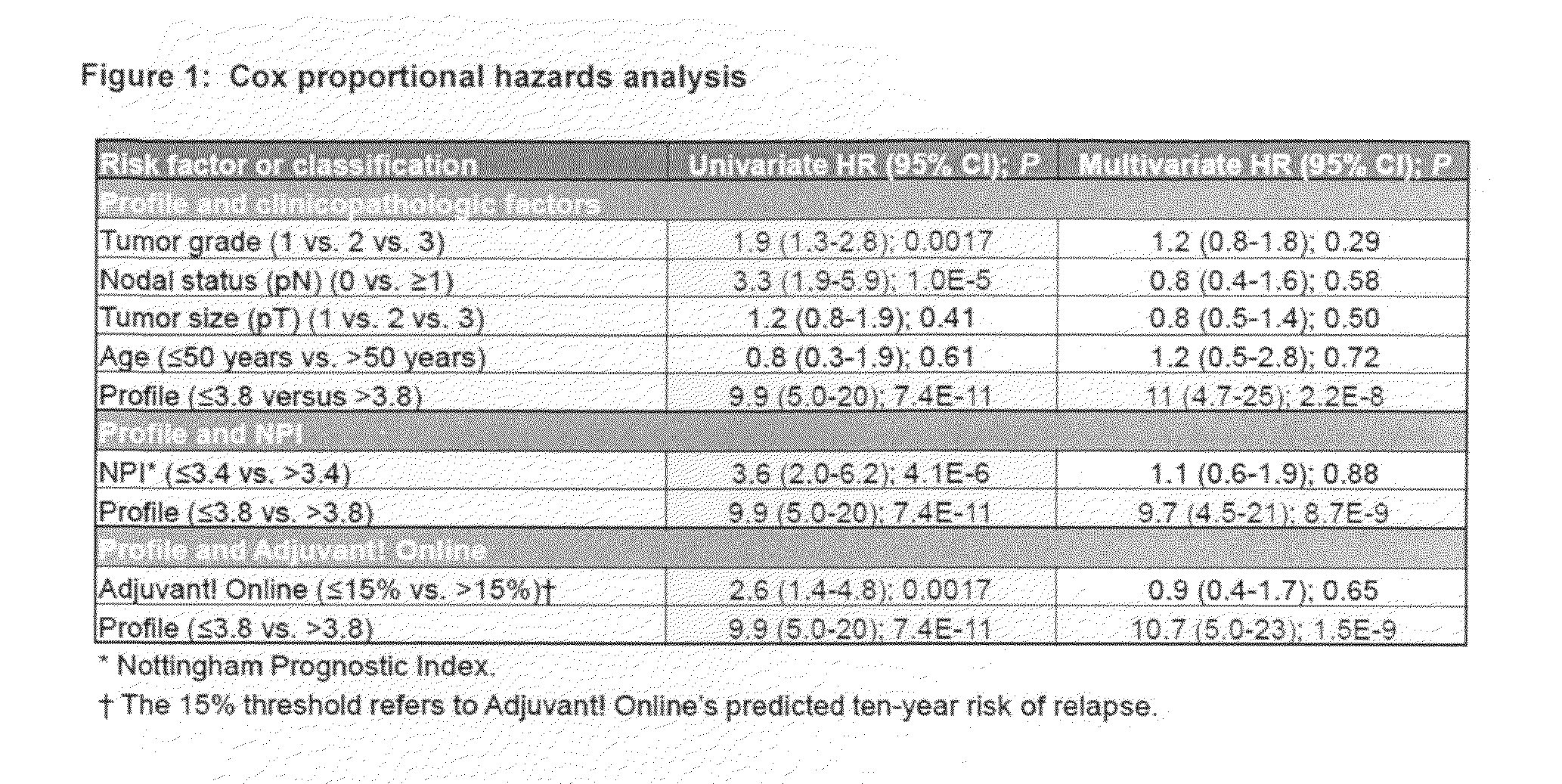Molecular markers predicting response to adjuvant therapy, or disease progression, in breast cancer
a breast cancer and adjuvant therapy technology, applied in the field of molecular markers for the prediction of the response to adjuvant therapy or the progression of disease, can solve the problems of unnecessary side effects in both short-term and long-term, and the recurrence of chemotherapy-treated low-risk patients
- Summary
- Abstract
- Description
- Claims
- Application Information
AI Technical Summary
Benefits of technology
Problems solved by technology
Method used
Image
Examples
Embodiment Construction
1. The Preferred Embodiment of the Instant Invention
[0036]To clarify the relationship between and breast cancer progression or suppression, we have analyzed tissue sections specifically for stromal and tumor epithelial cell expression of caveolin-1 from a cohorts of 550 breast cancer patients. Approximately 90 of the patients were originally diagnosed with DCIS or mixed DCIS and LCIS breast carcinomas.
[0037]Tissue microarray slides that contain tumor cores from a total of approximately 550 breast cancer patients with associated clinicopathologic, treatment, and outcome data were obtained from the Royal Perth Hospital (RPH) in Perth, Western Australia. After the RPH samples were stained and scored, and algorithms trained on the combined UHB and IPC patients sets (see Linke et al: A multi-marker model to predict outcome in tamoxifen-treated breast cancer patients. Clin Cancer Res 12:1175-1183, 2006 and U.S. patent application Ser. Nos. 11 / 407,169 and 11 / 787,518) were used to assign ri...
PUM
 Login to View More
Login to View More Abstract
Description
Claims
Application Information
 Login to View More
Login to View More - R&D
- Intellectual Property
- Life Sciences
- Materials
- Tech Scout
- Unparalleled Data Quality
- Higher Quality Content
- 60% Fewer Hallucinations
Browse by: Latest US Patents, China's latest patents, Technical Efficacy Thesaurus, Application Domain, Technology Topic, Popular Technical Reports.
© 2025 PatSnap. All rights reserved.Legal|Privacy policy|Modern Slavery Act Transparency Statement|Sitemap|About US| Contact US: help@patsnap.com



